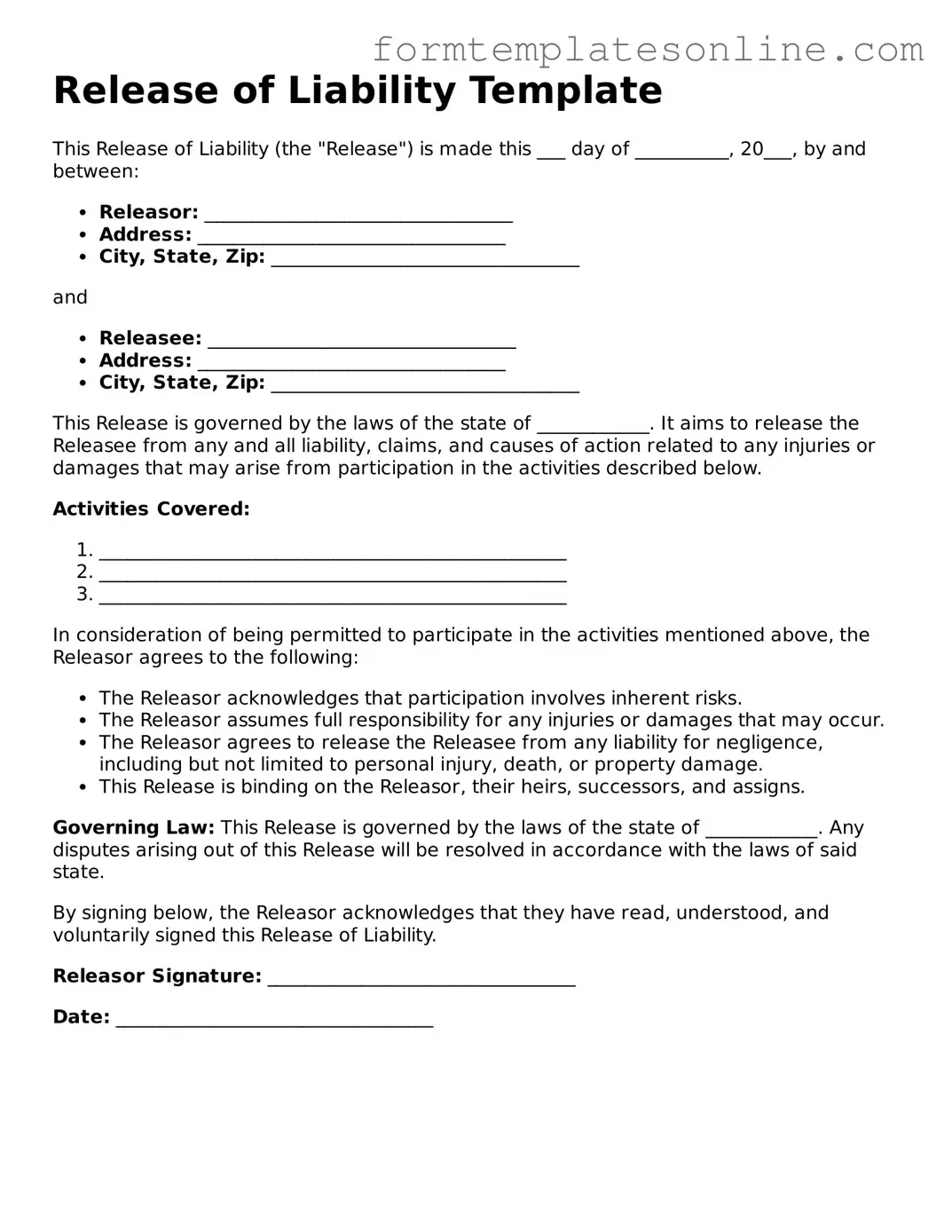Release of Liability Template
This Release of Liability (the "Release") is made this ___ day of __________, 20___, by and between:
- Releasor: _________________________________
- Address: _________________________________
- City, State, Zip: _________________________________
and
- Releasee: _________________________________
- Address: _________________________________
- City, State, Zip: _________________________________
This Release is governed by the laws of the state of ____________. It aims to release the Releasee from any and all liability, claims, and causes of action related to any injuries or damages that may arise from participation in the activities described below.
Activities Covered:
- __________________________________________________
- __________________________________________________
- __________________________________________________
In consideration of being permitted to participate in the activities mentioned above, the Releasor agrees to the following:
- The Releasor acknowledges that participation involves inherent risks.
- The Releasor assumes full responsibility for any injuries or damages that may occur.
- The Releasor agrees to release the Releasee from any liability for negligence, including but not limited to personal injury, death, or property damage.
- This Release is binding on the Releasor, their heirs, successors, and assigns.
Governing Law: This Release is governed by the laws of the state of ____________. Any disputes arising out of this Release will be resolved in accordance with the laws of said state.
By signing below, the Releasor acknowledges that they have read, understood, and voluntarily signed this Release of Liability.
Releasor Signature: _________________________________
Date: __________________________________
